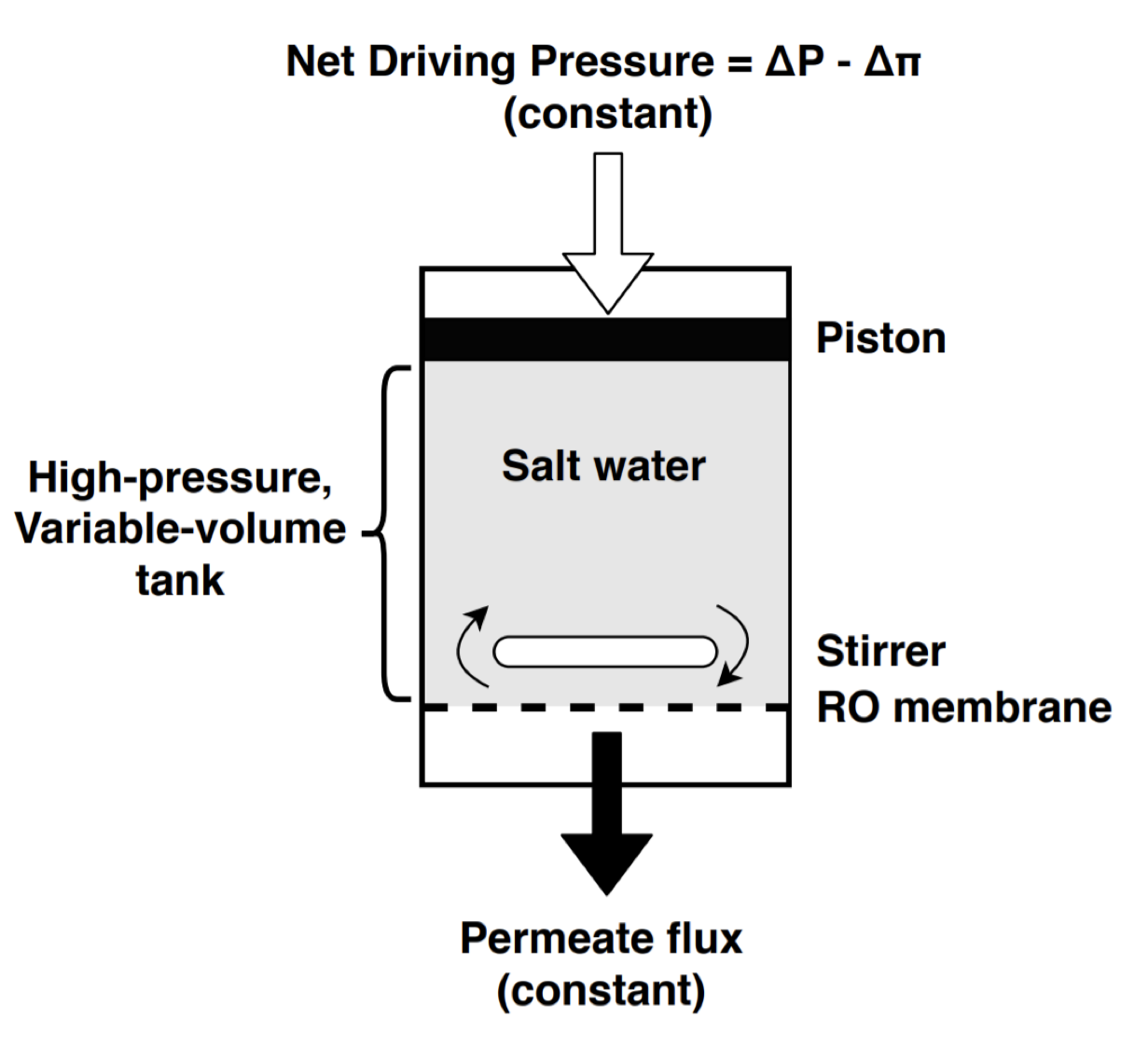In a sense, treating water in batches is the simplest form of membrane filtration. Push salty water against a membrane and force freshwater through.
 The idea of batch desalting is not new
The idea of batch desalting is not new
Note the stirrer, which is used to keep the salt water well-mixed. One challenge to implementing batch RO practically is the need for a pressurized container with varying volume.
RO is normally implemented as a continuous process. This has worked well for decades. But there are limitations with this approach.
 Continuous RO dominates the market today
Continuous RO dominates the market today
In continuous RO, feed passes once through the system and permeate (product water) is recovered in a single pass. In a batch RO process, we take the retentate from the back of the system and recirculate it to the front. Water passes through the membranes multiple times as permeate is recovered.
In 2017, we made the batch RO concept a reality and got it running in the lab at MIT.
 Our first batch RO prototype looked like this
Our first batch RO prototype looked like this
Note that the system diagram exhibits key elements from the first two diagrams:
As the bladder expands, the remaining feed in the circulation loop shrinks at the same rate. Permeate leaves through the RO membrane, which acts as a pressure relief valve. The relief pressure increases as the feed grows more concentrated.
Pressure control is totally analog and automatic. This design exploits the fact that water is an incompressible fluid. As the high-pressure pump forces water into the bladder, the pressure of the feed rises rapidly until fluid is able to leave through the RO membrane.
In this iteration, the bladder and the membrane shared a vessel. In other iterations we placed them in separate vessels. Either way works.